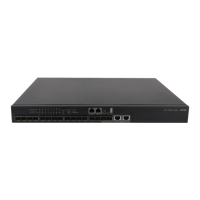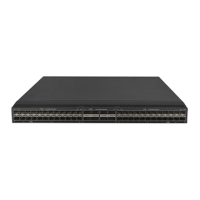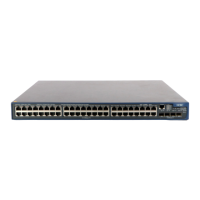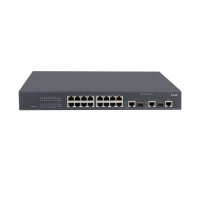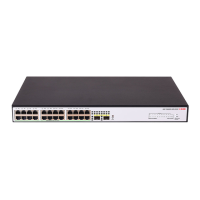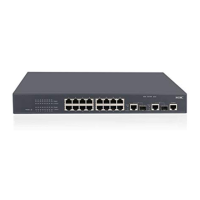6
Excluded ports (user-configured):
Bridge-Aggregation4
Vlan-interface999
Excluded ports (system-configured):
IRF physical interfaces:
Ten-GigabitEthernet1/0/1
Ten-GigabitEthernet1/0/2
Ten-GigabitEthernet2/0/1
Ten-GigabitEthernet2/0/2
BFD MAD interfaces:
Ten-GigabitEthernet1/0/3
Ten-GigabitEthernet2/0/3
Vlan-interface3
Member interfaces of excluded interface Bridge-Aggregation 4:
Ten-GigabitEthernet1/0/4
Ten-GigabitEthernet2/0/4
MAD ARP disabled.
MAD ND disabled.
MAD LACP enabled interface: Bridge-Aggregation 1
MAD status : Normal
Member ID Port MAD status
1 Ten-GigabitEthernet1/0/5 Normal
2 Ten-GigabitEthernet2/0/5 Normal
MAD BFD enabled interface: VLAN-interface 3
MAD status : Normal
Member ID MAD IP address Neighbor MAD status
1 192.168.1.1/24 2 Normal
2 192.168.1.2/24 1 Normal
Table 5 Command output
MAD ARP disabled.
Status of ARP MAD.
This field displays
MAD ARP enabled
if ARP MAD is enabled.
MAD ND disabled.
Status of ND MAD.
This field displays
MAD ND enabled
if ND MAD is enabled.
MAD LACP enabled.
Status of LACP MAD.
This field displays
MAD LACP disabled
if LACP MAD is disabled.
MAD BFD enabled.
Status of BFD MAD.
This field displays
MAD BFD disabled
if BFD MAD is disabled.
Multi-active recovery state
Whether the IRF fabric is in Recovery state:
• Yes—The IRF fabric is in Recovery state. When MAD detects that an
IRF fabric has split into multiple IRF fabrics, it allows one fabric to
forward traffic. All the other IRF fabrics are set to the Recovery state. In
Recovery state, MAD shuts down all common network interfaces in the
fabric except for the system- and user-excluded network interfaces.
• No—The IRF fabric is not in
Recovery state. It is active and can forward
traffic.
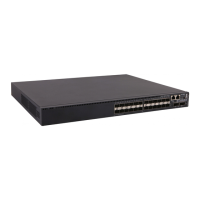
